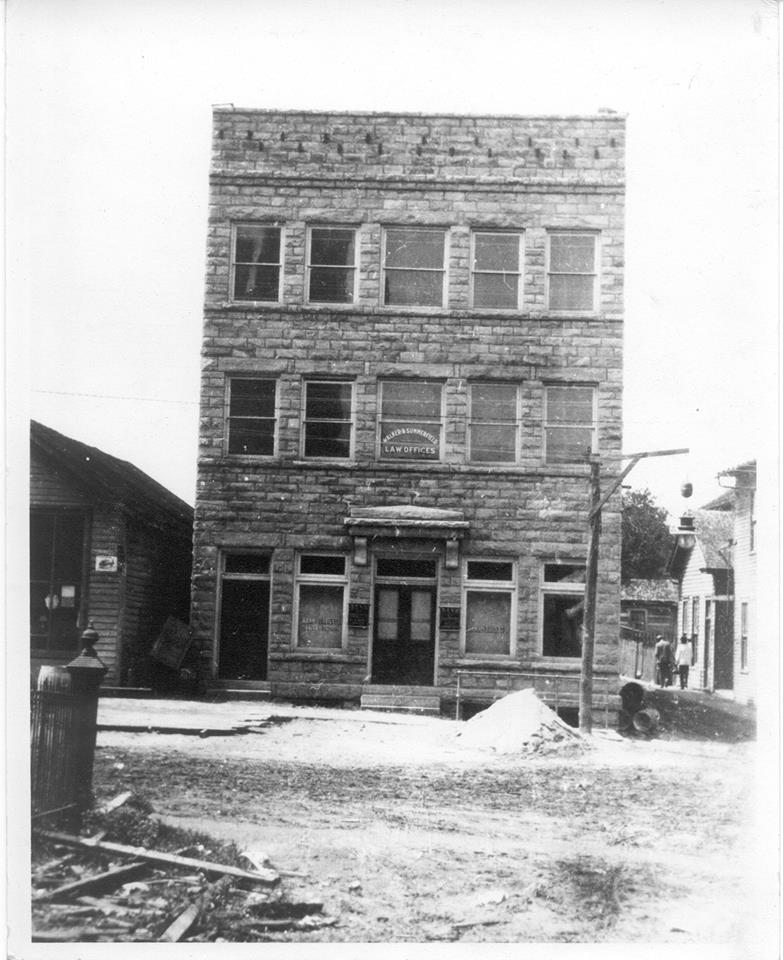 |
| Carl McLaughlin, the official historian of Lafayette Flats, with owners Shawn and Amy. |
Editor’s Note: Amy’s dad, Carl McLaughlin, is the official historian of Lafayette Flats. While Carl has a Master’s Degree in Counseling, his Bachelor’s Degree is in History from West Virginia Institute of Technology. He recently retired from a career in the Juvenile Probation Department of Kanawha County. Since his retirement, he has spent untold hours online and traveling to libraries and courthouses researching genealogy – not just his own but that of people he finds interesting. Since our project began, he has been looking into the history of our building and the people who were involved with its earliest days. As a long-time member of the Kanawha Trail Club, Carl has led many hikes in the New River Gorge and has always been intrigued by the history of the region. His prior knowledge of the area has helped him connect some of the dots in the history of our building. This is his first in a series of blog posts about our building’s history:
 |
| The earliest known photo of the Malcolm Building circa 1910. |
The Malcolm Building or Lafayette Flats, as we know it today, “will be erected in what promises to be the finest business block in town,” according to The Fayette Journal of August 25, 1904.
The article, which was headed “Stone Building,” explained how Dr. Michael McAlhaney Malcolm had “let the contract” for about $6,000 to house the new Bank of Fayette. Dr. Malcolm was a prominent physician and had accumulated considerable finances.
Antonio Gros Janutolo, an Italian immigrant of Kay Moor in Fayette County, accepted the contract to construct this stone building. At the time of this article, Antonio was already quarrying stone for it. The Janutolo family line, as well as many other Italian families, would play a major role in Fayetteville’s construction for many decades.
Before the building or the financing, the organization of the Bank of Fayette had to occur. This organization took place on July 21, 1904. Capital stock was issued for $25,000 at $100 per share. The first officers were President L.W. Nuttall and Vice President Dr. M. M. Malcolm.
Joseph Tyler Grose was elected cashier. Interestingly, Grose owned 246 of the total 250 shares of capital stock for a total value of $24,600. Grose would play several key roles in the life of the bank and was its president at its closing on May 27, 1932.
More on each of these key individuals will be forthcoming. The stonemason, Antonio Gros Janutolo, will be featured next.
Next Post: From Beilla, Italy to Fayetteville, WV